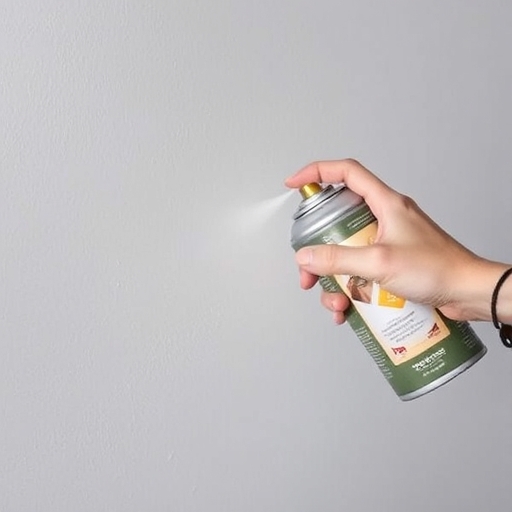How Long Does It Take for Spray Paint to Dry?
Spray painting is a popular method for applying paint to various surfaces due to its ease of use and ability to provide a smooth finish. However, one of the most common questions among DIY enthusiasts and professionals alike is, “How long does it take for spray paint to dry?” The drying time can vary based on several factors, including the type of spray paint used, environmental conditions, and the surface being painted. In this article, we’ll explore these factors in detail, provide tips for ensuring a quick drying time, and answer some frequently asked questions.
Understanding Spray Paint Drying Times
Types of Drying
When discussing drying times, it’s important to differentiate between the various stages of drying that spray paint goes through:
- Initial Tack Dry: This is the first stage where the surface feels dry to the touch. However, it is still vulnerable to smudging or damage.
- Touch Dry: At this stage, the paint is dry enough to touch lightly without leaving fingerprints. However, it may still be soft underneath.
- Handle Dry: The paint is dry enough to be handled without risk of damage, but it may still take longer to cure fully.
- Fully Cured: This is the final stage where the paint has hardened completely and can withstand wear and tear.
- Acrylic Spray Paint: Dries quickly, generally within 20-30 minutes for initial tack dry.
- Enamel Spray Paint: Takes longer, often 1-2 hours for touch dry.
- Lacquer Spray Paint: Dries quickly, usually within 15-30 minutes.
- Temperature: Warmer temperatures can speed up drying times.
- Humidity: High humidity can slow down the drying process.
- Airflow: Good ventilation can help paint dry faster.
- Wood: Absorbs paint and may take longer to dry.
- Metal: Dries relatively quickly due to non-porous nature.
- Plastic: Can vary widely depending on the type of plastic.
- Temperature: Paint in warmer weather (ideally between 70°F and 85°F).
- Low Humidity: Aim for a dry day; humidity can significantly slow drying time.
- Good Ventilation: Work in a well-ventilated area to improve airflow.
- Less is More: Apply multiple thin coats rather than one thick coat to reduce drying time.
- Allow Each Coat to Dry: Wait for the initial tack dry before applying the next coat.
- Increase Airflow: Use a fan to circulate air around the painted surface.
- Heat the Area: If safe, a space heater can increase the temperature of the room and speed up drying.
- Indoor vs. Outdoor: If it’s humid outside, consider painting indoors where you can control the environment.
- Read the Label: Always check the spray paint can for specific drying times and recommendations.
Factors Affecting Drying Time
Several factors can influence how long it takes for spray paint to dry:
1. Type of Spray Paint: Different formulations have varying drying times.
2. Environmental Conditions: Temperature, humidity, and airflow play a significant role.
3. Surface Type: Different materials absorb paint differently.
4. Number of Coats: The more layers you apply, the longer it will take to dry. Each additional coat may require more time.
5. Application Technique: How you apply the paint can also affect drying time. Thicker applications take longer to dry than thin, even coats.
General Drying Time Estimates
Here’s a quick reference guide to the drying times for different types of spray paint under ideal conditions (70°F and 50% humidity):
| Type of Spray Paint | Initial Tack Dry | Touch Dry | Handle Dry | Fully Cured |
|---|---|---|---|---|
| Acrylic | 20-30 minutes | 1-2 hours | 24 hours | 1 week |
| Enamel | 1-2 hours | 3-4 hours | 48 hours | 3-4 weeks |
| Lacquer | 15-30 minutes | 1 hour | 24 hours | 1-2 weeks |
Tips for Faster Drying
If you’re in a hurry, here are some tips to help speed up the drying process of spray paint:
1. Choose the Right Time and Place
2. Apply Thin Coats
3. Use a Fan or Heater
4. Avoid High Humidity Areas
5. Follow Manufacturer Instructions
Frequently Asked Questions (FAQ)
How can I tell if spray paint is dry?
You can perform the “touch test.” Gently touch an inconspicuous area of the painted surface. If it feels sticky or leaves fingerprints, it needs more time to dry.
Can I speed up drying time with a heat gun?
While a heat gun can effectively speed up drying, use it cautiously. Keep it at a safe distance to avoid damaging the paint or the surface underneath.
What happens if I apply a second coat too soon?
If you apply a second coat before the first one is adequately dry, you risk causing runs, drips, or an uneven finish. Always wait until the first coat is touch dry.
Is it safe to spray paint indoors?
Spray painting indoors is possible, but ensure you have adequate ventilation and use a mask to avoid inhaling fumes.
Can I use a hairdryer to speed up drying?
Using a hairdryer on a low setting can help speed up the drying process. However, keep it at a distance to prevent overheating the paint.
Conclusion
Understanding how long it takes for spray paint to dry is crucial for achieving the best results in your painting projects. By considering the type of spray paint, environmental conditions, and application techniques, you can effectively manage drying times and ensure a successful finish. Remember to always follow the manufacturer’s guidelines and take the necessary precautions when working with spray paint. With the right approach, you’ll be able to create beautiful, durable finishes that enhance your projects for years to come.
Whether you’re a seasoned DIYer or just starting, mastering the art of spray painting can open up a world of creative possibilities. Happy painting!

